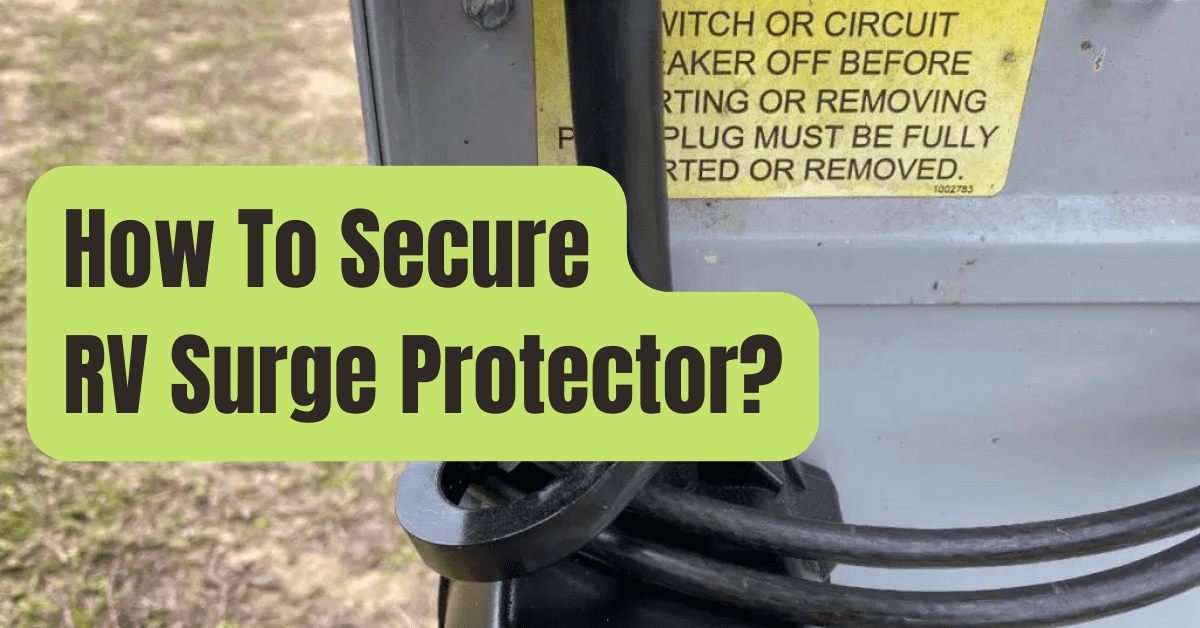One may utilize a variety of devices and appliances in modern RVs.
You must make sure the voltage provided is ideal and dependable due to the delicate nature of electrical items.
Therefore, if you want to prevent losses brought on by voltage problems, an RV surge protector is a need.
Surge protectors, which are often left outside of an RV near the electrical outlet and are high-theft items, are frequently taken by opportunistic criminals.
Therefore, to keep it safe, you need to have a high-quality locking mechanism or even a lock combination.
Let me go through some different surge protector security measures in this post.
#1. Utilize A Padlock And A Sturdy Bicycle Chain
Using a sturdy bicycle chain and padlock to secure a surge protector is the least expensive and most efficient solution.
Even though this method of security is a little dated, it is effective and flawless.
Any opportunistic thief will struggle against a strong, high-quality bicycle chain and a high-security padlock.
Don’t skimp on the bicycle chain’s quality; it should be strong and thick so that it cannot be cut with bolt cutters.
Only a bold criminal with a grinder could successfully cut a thick chain since the noise would be too audible.
Quality bicycle chains are readily available online or at your neighborhood hardware shop.
Use a chain and padlock to secure your surge protection device by wrapping the chain around the electrical outlet post, rotating it to wrap around the cable, and then locking the chain by inserting the padlock through the chain links.
You may add an additional chain to the surge protector’s bottom portion and lock it with a padlock in the same manner as the top portion to increase security.
#2. Utilizing a Cable Lock
Using a locking cable is another well-liked method by campers to secure their RV surge protector.
Due of how simple it is to use, this kind of lock is common.
Make sure a cable lock you choose is waterproof, has a robust lock, and has a number of keys.
It should also be suitable for outdoor use.
The cable lock has to be coated with rust-resistant substance and constructed of high-quality material, preferably steel.
Bolt cutters may be used to sever a cable lock, which is less secure than a bicycle chain.
Fortunately, opportunistic robbers seldom have bolt cutters on them.
Since there are so many unattended RV surge protectors, they may easily take them.
These petty burglars just care about getting in quickly and quietly, without causing any harm or disturbance.
Place the cable around the power outlet post and tightly wrap it around the surge protector’s electrical cord to employ a cable lock.
To make a tight loop, be sure to pass the wire through the exposed tunnel (there should be no slack).
Once finished, lock it with the key.
Use two cable locks once more to increase security.
one pulling the top tight
while the other tightens the surge protection box’s bottom portion.
To prevent the lock from rusting, be sure to frequently add lubricating oil to it.
#3. Purchase A Lockbox
To assist its clients in keeping surge protectors secure either inside or away from their RV, surge protector manufacturers have developed lockboxes.
The surge protectors are hidden by the lockbox, making it impossible for anybody to reach them without a key unless they take the whole device apart.
It goes without saying that disassembling the equipment will take time and be loud.
You will need to use a chain lock or cable lock to secure the top portion of your surge protection unit as this sort of lock should only secure the bottom portion of the surge protector.
In their lockboxes, some manufacturers include a padlock; others do not.
You may spend money on a high-security padlock if the provided padlock is subpar.
Because the box is roomy, it can hold the surge protection device and its power connections while also locking them to the electrical pedestal.
Make sure a lockbox you choose is constructed of high-quality metal, is simple to install, and has space for the plugs and power cables that connect to your device.
You can safeguard your surge protector by using the user handbook, which is often provided by manufacturers.
#4. Use a Ball Plug Lock
This kind of surge protector lock resembles a lockbox quite a bit, although it has a box form as opposed to a lockbox.
To safeguard plugs and electrical wires entering your protector, much like the lockbox, this too should be used in conjunction with a chain-style lock or cable lock around the top.
This kind of lock is excellent for stopping bad kids from disconnecting your power connections in addition to deterring opportunist criminals who don’t have bolt cutters with them.
Although they are simple to break, as we just said, opportunist criminals are constantly searching for the easiest method to take goods and won’t draw attention to themselves by doing so.
The majority of the time, a padlock is included with this kind of lock, however they are often rather light.
To increase security, you might spend money on a high-security padlock.
The user handbook from the manufacturer includes instructions for installing this kind of lock.
To secure the top of your surge protection unit as well, don’t forget to add a chain lock.
Conclusion
In order to safeguard your pricey gadgets and appliances from potential electrical failures, a surge protector is a need in an RV.
You run the risk of breaking your pricey equipment without it.
Because they are so easy to steal from, it is crucial to safeguard it using one of the strategies we have covered above.
All of the techniques we’ve covered here will stop opportunistic burglars from taking your investment and stop mischievous kids from disconnecting wiring wires.
To make it more difficult for burglars you enter your apartment, be sure to use a high-security padlock.










